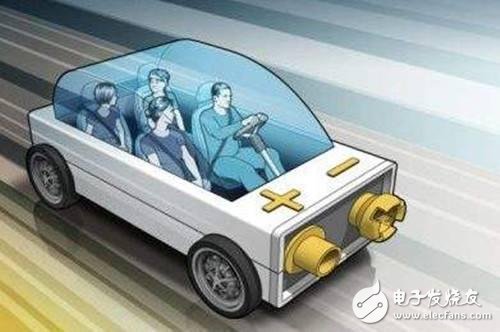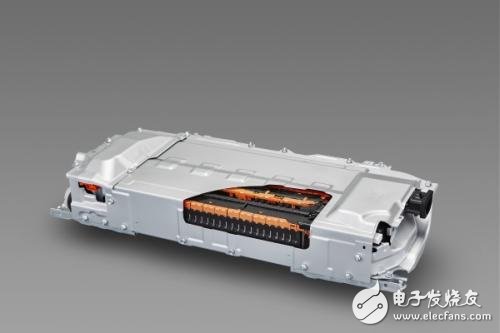Electric vehicle batteries are divided into two categories, batteries and fuel cells. The battery is suitable for pure electric vehicles, including lead-acid batteries, nickel-based batteries, sodium-sulfur batteries, secondary lithium batteries, and air batteries.
Fuel cells are dedicated to fuel cell electric vehicles, including alkaline fuel cells (AFC), phosphoric acid fuel cells (PAFC), molten carbonate fuel cells (MCFC), solid oxide fuel cells (SOFC), proton exchange membrane fuel cells ( PEMFC), direct methanol fuel cell (DMFC).
Electric car battery functionThere are slight differences depending on the type of electric vehicle. In a pure electric vehicle equipped with only a battery, the battery functions as the sole source of power for the vehicle drive system. In a hybrid vehicle equipped with a conventional engine (or fuel cell) and a battery, the battery can play the role of the main power source of the vehicle drive system or act as an auxiliary power source. It can be seen that at low speed and start-up, the battery plays the role of the main power source of the vehicle drive system; when it is fully loaded, it acts as the auxiliary power source; it acts to store energy during normal driving or deceleration and braking. Character.

A fuel cell is composed of an anode, a cathode, an electrolyte, and a separator. The fuel is anodized and the oxidant is reduced at the cathode. If gaseous fuel (hydrogen) is continuously supplied to the anode (ie, the anode of the external circuit, also referred to as the fuel electrode), and oxygen (or air) is continuously supplied to the cathode (ie, the anode of the external circuit, also referred to as the air electrode), It is possible to continuously react an electrochemical reaction on the electrode and generate an electric current. It can be seen that the fuel cell is different from the conventional battery in that its fuel and oxidant are not stored in the battery, but are stored in a storage tank outside the battery. When it works (outputs current and does work), it is necessary to continuously input fuel and oxidant into the battery while discharging the reaction product. Therefore, from a working mode, it is similar to a conventional gasoline or diesel generator. Since the fuel cell is continuously fed with fuel and oxidant into the battery during operation, the fuel and oxidant used in the fuel cell are both fluid (gas or liquid). The most commonly used fuels are pure hydrogen, various hydrogen-rich gases (such as reformed gas) and certain liquids (such as aqueous methanol). The commonly used oxidants are pure oxygen, clean air and other gases (such as peroxidation). An aqueous solution of hydrogen and nitric acid, etc.).
The role of the fuel cell anode is to provide a common interface for the fuel and electrolyte, and to catalyze the oxidation of the fuel, while transferring the electrons generated in the reaction to the external circuit or to the current collector and then to the external circuit. The role of the cathode (oxygen electrode) is to provide a common interface between oxygen and the electrolyte, catalyzing the reduction of oxygen, and transporting electrons from the external circuit to the reaction site of the oxygen electrode. Since most of the reactions occurring on the electrodes are multiphase interfacial reactions, in order to increase the reaction rate, the electrodes are generally made of a porous material and coated with an electrocatalyst.
The function of the electrolyte is to transport ions generated by the fuel electrode and the oxygen electrode in the electrode reaction, and to prevent direct transfer of electrons between the electrodes. The role of the membrane is to conduct ions, prevent electrons from passing directly between the electrodes, and separate the oxidant from the reducing agent. Therefore, the diaphragm must be resistant to electrolyte corrosion and insulation and have good wettability.
BatteryAn electric vehicle battery pack is composed of a plurality of batteries stacked in series. A typical battery pack has about 96 batteries. For a Li-Ion battery that is charged to 4.2V, such a battery pack can produce a total voltage of more than 400V. Although the automotive power system treats the battery pack as a single high-voltage battery, charging and discharging the entire battery pack each time, the battery control system must consider each battery condition independently. If one of the battery packs has a slightly lower capacity than the other batteries, the state of charge will gradually deviate from the other batteries after multiple charge/discharge cycles. If the state of charge of this battery is not periodically balanced with other cells, it will eventually enter a deep discharge state, causing damage and eventually forming a battery pack failure. To prevent this from happening, the voltage of each battery must be monitored to determine the state of charge. In addition, there must be a device that allows the batteries to be individually charged or discharged to balance the state of charge of these batteries.
An important consideration in battery pack monitoring systems is the communication interface. For communication within the PC board, common options include the Serial Peripheral Interface (SPI) bus and the I2C bus, each with low communication overhead for low-interference environments. Another option is the Controller Area Network (CAN) bus, which is widely used in automotive applications. The CAN bus is very robust, with error detection and fault tolerance characteristics, but it has a large communication overhead and high material cost. Although the connection from the battery system to the car's main CAN bus is worthwhile, it is advantageous to use SPI or I2C communication within the battery pack.
After the introduction of private subsidies for new energy vehicles, the “re-subsidy†policy of some pilot cities was also introduced, and the consumption of new energy vehicles was gradually started. Faced with broad market prospects, giants such as State Grid, China Southern Power Grid, CNOOC, and Sinopec have sprinted around and set off a wave of construction of charging stations.
Up to now, Shanghai Tunxi, Shenzhen Longgang, Chengdu Shiyang, Tangshan Nanhu, Yan'an, Zhengzhou, Nanning and other places have been built, under construction or will open a large number of charging stations in the near future, of which Shanghai plans to reach 5,000 charging piles within three years. The scale of Changchun plans to build 15 charging stations and 5000 charging piles within three years... Is the battery size and charging interface uniform? Can the battery quality pass? How big is the damage caused by fast charging on the battery? A series of questions began to be exposed.
Electric vehicle battery basic classificationThe battery for electric vehicles is a chemical power source, and its classification method is many. According to the electrolyte is divided into:
a. Alkaline battery. That is, the electrolyte is an alkaline aqueous solution;
b. Acidic battery. That is, the electrolyte is an acidic aqueous solution;
c. Neutral battery. That is, the electrolyte is a neutral aqueous solution;
d. Organic electrolyte solution battery. That is, the electrolyte is a battery of an organic electrolyte solution.
According to the existence of active substances, they are divided into:
a. The active substance is stored on the electrode. Can be divided into primary battery (non-regenerative, primary battery) and secondary battery (regeneration, battery);
b. The active material is continuously supplied to the electrode. Can be divided into non-renewable fuel cells and regenerative fuel cells.
According to some characteristics of the battery are divided into:
a. high capacity battery;
b. Maintenance-free battery;
c. sealed battery;
d. a burn-in battery;
e. Explosion-proof battery;
f. Button battery, rectangular battery, cylindrical battery, etc.
Although the chemical power supply has a wide variety of uses, a wide range of uses, and large differences in shape, it is difficult to unify the above classification methods, but it is generally divided into four categories according to the nature of its work and storage methods:
Primary battery
A primary battery, also known as a "primary battery", is a battery that cannot be recharged after being discharged. In other words, the battery can only be used once, and the battery can only be discarded after discharge. The reason why such batteries cannot be recharged, or the battery reaction itself is irreversible, or the conditional restrictions make the reversible reaction difficult. Such as:
Zn-Mn dry battery Zn│NH4Cl·ZnCl2│MnO2(C)
Zinc mercury battery Zn│KOH│HgO
Silver zinc battery Zn│KOH│Ag2O
Secondary battery
A secondary battery, also referred to as a "battery", is a type of battery that can be re-discharged by recharging the active material after being discharged, and can be repeatedly used repeatedly. This type of battery is actually a chemical energy storage device. The battery is suffocated with direct current. At this time, the electrical energy is stored in the battery in the form of chemical energy. When discharged, the chemical energy is converted into electrical energy. Such as:
Lead acid battery Pb│H2SO4│PbO2
Nickel cadmium battery Cd│KOH│NiOOH
Nickel-metal hydride battery H2│KOH│NiOOH
Lithium ion battery LiCoO2│ organic solvent│6C
Zinc air battery Zn│KOH│O2 (air)

Storage battery
The storage battery, also known as the “activated batteryâ€, is a type of battery in which the positive and negative active materials and the electrolyte are not in direct contact, and the electrolyte is temporarily injected before use or activated by other methods. The chemical deterioration or self-discharge of the positive and negative active materials of such batteries is basically eliminated due to the isolation from the electrolyte, so that the battery can be stored for a long time. Such as:
Magnesium silver battery Mg│MgCl2│AgCl
Calcium heat battery Ca│LiCl-KCl│CaCrO4(Ni)
Lead perchloric acid battery Pb│HclO4│PbO2
The fuel cell
A fuel cell, also called a "continuous battery", is a type of battery that can discharge continuously for a long time as long as the active material is continuously injected into the battery. It is characterized in that the battery itself is only a carrier, and the fuel cell can be regarded as a kind of battery that supplies the reactants from the outside to the battery when electrical energy is required. Such as:
Hydrogen fuel cell H2│KOH│O2
Hollow fuel cell N2H4│KOH│O2 (air)
It must be pointed out that the above classification method does not mean that a certain battery system can only belong to a primary battery, a secondary battery, a storage battery or a fuel battery. On the contrary, a certain battery system can be designed into different types of batteries as needed. For example, a zinc-silver battery can be designed as a primary battery, or as a secondary battery, or as a storage battery.
About the goods
Multifunction :Gas Turbine Flow Meter can be used for a variety of liquids, including gasoline, diesel, kerosene, mineral spirit, Stada solvent, heptazenethane, etc
Easy to use :natural gas turbine meter large easy-to-read display, standard 1-1/2-inch inlet and outlet, and national tube taper thread
The natural gas turbine flow meter can be customized for positioning: The flow port provides easy vertical or horizontal positioning
Meter features: 6 to 40 gallons per minute, plus minus 2% accuracy, up to 50 PSI
turbine meter gas replacement: Replacement of model 9011.5
Gas Turbine Flow Meter,natural gas turbine flow meter,natural gas turbine meter,turbine gas flowmeter
Changshu Herun Import & Export Co.,Ltd , https://www.herunchina.com